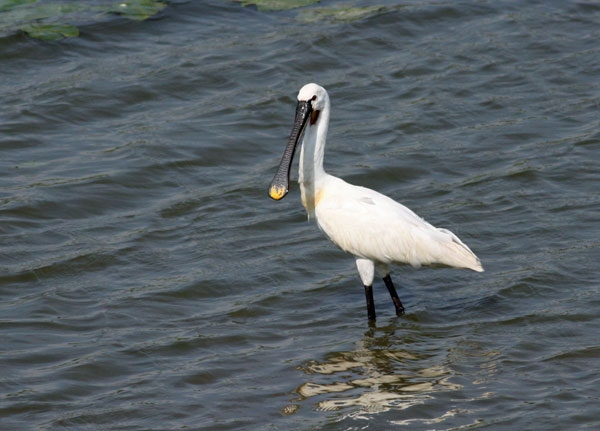From the Field
October 23: Steve Howell on an unusually good week in the field
Recently, I was lucky enough to be standing next to Mark Billings in Baja California, Mexico, when Mark spotted and we identified Mexico’s first Marsh Sandpiper – a species otherwise recorded in the New World only from islands in Alaska! Mark was a participant some 7 years ago at the Young Birders Convention event in Kern County, which Steve and Jon Dunn helped to lead for WINGS – it’s great to see young birders years later, even if Steve says it makes him feel a bit old and slow. Only four days later, I was standing next to Todd McGrath on a boat off Bodega Bay, California, when Todd spotted (and I helped identify) a White-chinned Petrel, one of only a handful of North American (and Northern Hemisphere) records. Not a bad week!
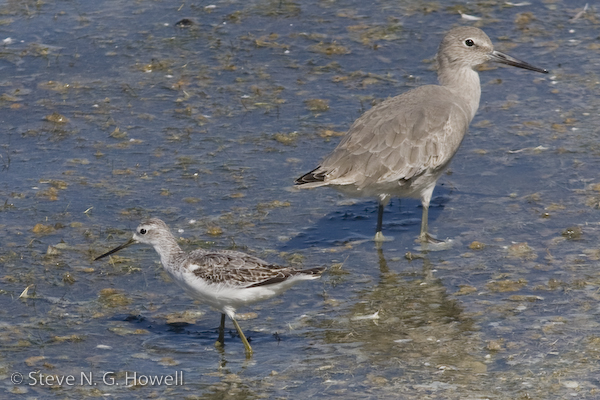
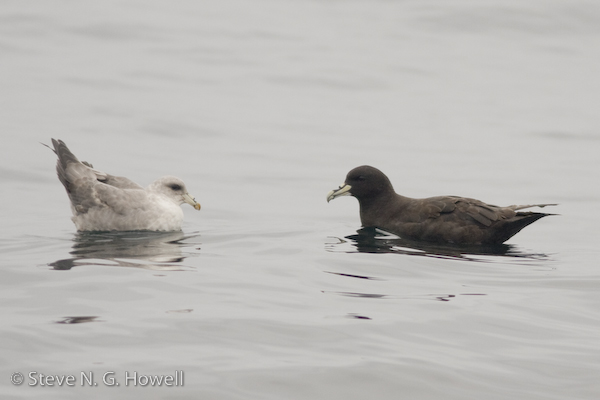
October 12: Gavin Bieber on his and Judy Davis's just completed tour to Southeastern Australia
Just wrapped up the first of three tours to the fantastic continent of Australia (images of Superb Fairy-wren, the cliffs of Cape Bruny (Tasmania) and an Australian Owlet-Nigtjar below). The rains of the last two years fostered excellent conditions and the populations of many bird species have rebounded after a decade of drought. We birded in the agricultural plains and drier upland Eucalypt forests of Victoria, along the stunningly beautiful and rugged coastline, within the temperate rainforests of Tasmania, and across the arid plains around Deniliquin. Any bird list from Australia contains an incredibly high proportion of endemics, and this first tour provided a wonderful introduction to a host of new families; Cockatoos, Woodswallows, Emu, Currawongs, Shrike-Thrushes, Australasian Robins, Honeyeaters, Bristlebirds, Treecreepers; it's a seemingly endless list of new diversity to explore and learn about. This year we had a few standouts, such as the extremely cooperative Plains-wanderer (and a bonus Inland Dotterel) around Deniliquin with local expert Phil Maher, and simply amazing views of Sooty and Powerful Owls around Melbourne. The weather in Tasmania was superlative, and all twelve endemics revealed themselves well! Can't wait to see what the second section of the tour through OZ has in store for us!
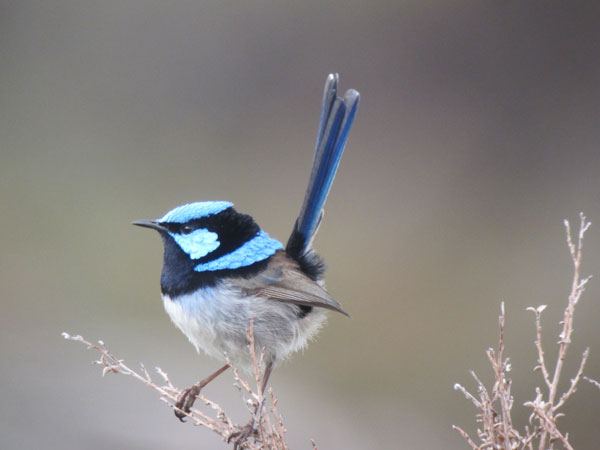
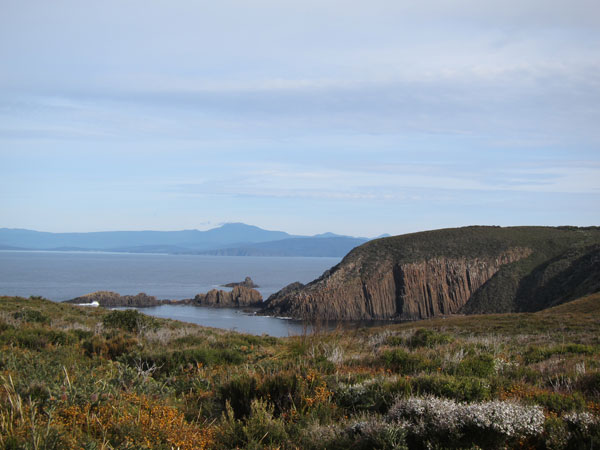
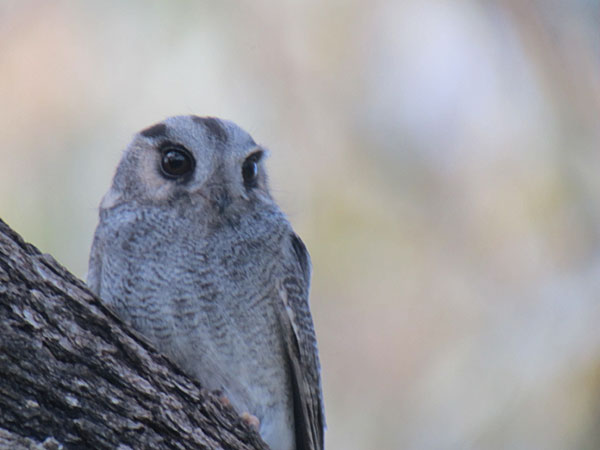
October 11: Rich Hoyer from Cristalino Jungle Lodge #6
I'm winding down my nine weeks here at the fabulous Cristalino Jungle Lodge. You might think that I'd be exhausted, tired of the heat and humidity, and ready to come home, but you'd be wrong. The days are actually a good five degrees cooler now, rain events have increased to an average of once every 3 days or so, and we're seeing the river levels start to rise. It's an exciting time of seasonal change in the tropics – just as interesting and full of discovery as migration in the temperate latitudes. I'll miss the birds that we see regularly on the grounds of the lodge, such as the Bare-faced Curassow and the Red-throated Piping-Guan (pictured below), and I'll miss the surprises that keep things exciting here. From this past week, just a couple examples were a male Muscovy Duck (yes, a real wild bird) on the river and even more unexpected, a Great Dusky Swift seen from one of the observation towers.
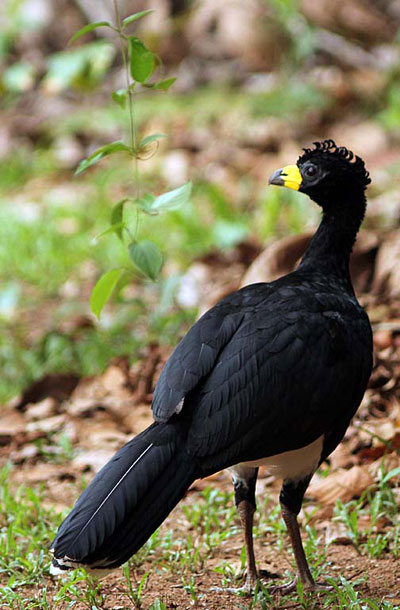
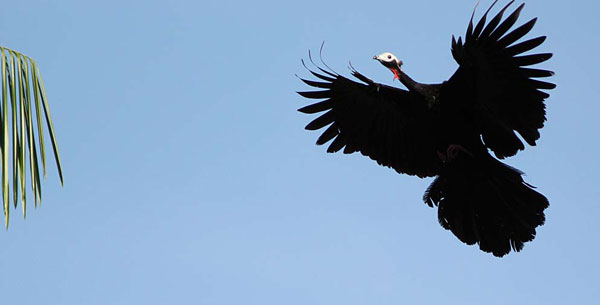
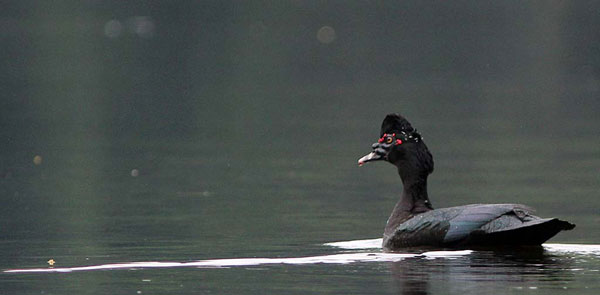
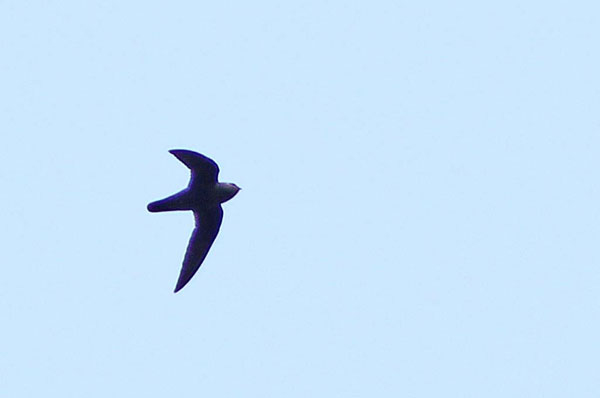
October 6: Paul Lehman on his just-concluded tour to Gambell, Alaska
Our tour was highlighted by the appearance of three juicy Asian landbird strays, several species of Asian shorebirds, and most of the regular “trans-Beringian” landbird migrants. The first day featured good looks at Red-throated Pipit and White Wagtail, the first Arctic Warblers, Bluethroats, and Eastern Yellow Wagtails, and our first introduction to the myriads of alcids (of 10 species - image of Parkeet Auklet as momentary handwarmer below), Short-tailed Shearwaters, and other seabirds off the Point. The rarities started the following day with a fine “Siberian” Stonechat (attended by the group, below), followed by a juvenile Lesser Sand-Plover. These were then topped the following day by the appearance of a Dusky Warbler and—especially—by the Pallas’s Bunting. Also during this period we enjoyed superb views of Sharp-tailed Sandpipers (below), a fly-by Gray-tailed Tattler, and a flock of Eurasian Wigeons. Good looks at a couple Steller’s Eiders, multiple Sabine’s Gulls right off the beach and more challenging Ancient Murrelets, a much-appreciated Kittlitz’s Murrelet, one Arctic Loon and just a single Slaty-backed Gull, beautiful point-blank adult Long-tailed Jaegers, many hundreds of Red Phalaropes feeding just off the beach, and finally the close fly-by of 2 Yellow-billed Loons rounded out the seabird show. We finished the tour with a stunning white Gyrfalcon.
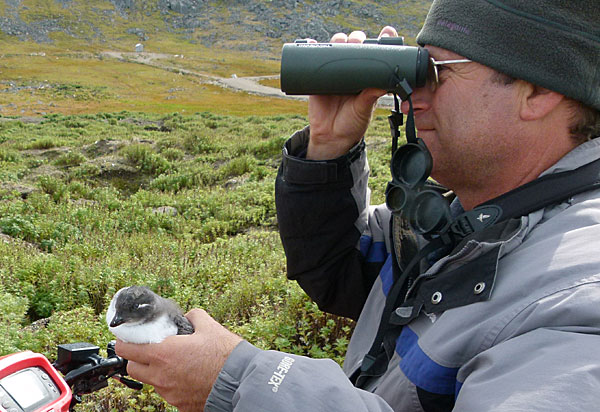
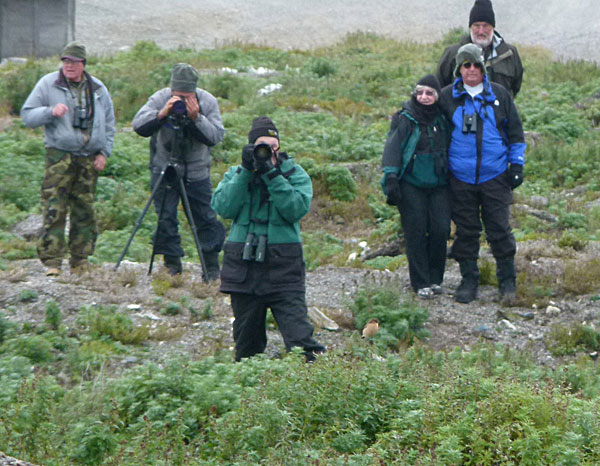
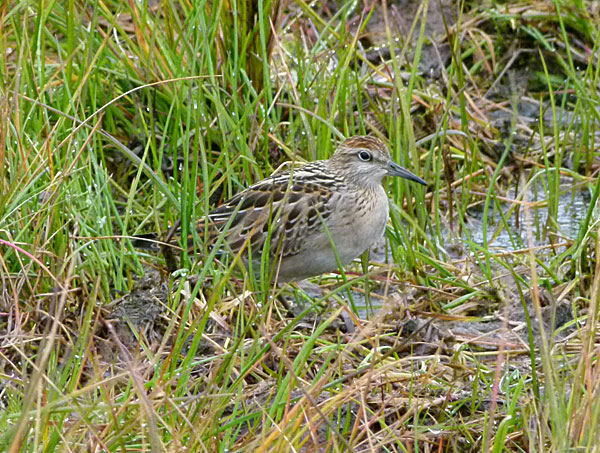
October 3: Jon Feenstra on his just-completed tour to Cape May, NJ
When it comes to birding in Cape May it’s a mystery as to what will fly over next; it's part of what keeps birders coming back. Though unfavorable winds and intermittent rain kept the migrant land birds largely bottled-up elsewhere, we worked hard and pulled together an impressive list of species: both the expected (Black-throated Blue Warbler, below) and the completely unexpected (Brown Booby, below) – and had a lot of fun while doing it.
The coastal saltmarshes and barrier islands of southern New Jersey were a particular focus of this tour and they rewarded for us repeatedly with many great birds: resident specialties like Piping Plover, Seaside Sparrow, and Boat-tailed Grackle; and a bit of the unusual, like Hudsonian Godwit, Yellow-headed Blackbird and of course the booby which had been hanging around for weeks. We even made a foray over to Delaware to touch the northern edge of the ranges of Brown-headed Nuthatch (below) and such shorebirds as American Avocet and Marbled Godwit. We tried to do more than just glance at what we saw and in the end every tern flock and mudflat full of peeps turned into an identification workshop.
I've been coming to Cape May for years and its physical diversity always amazes me. One can bird here for days and constantly be in a new area with different birds. I can't wait until next year.
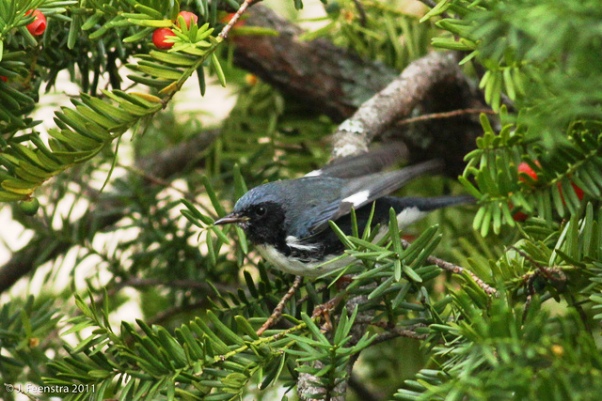
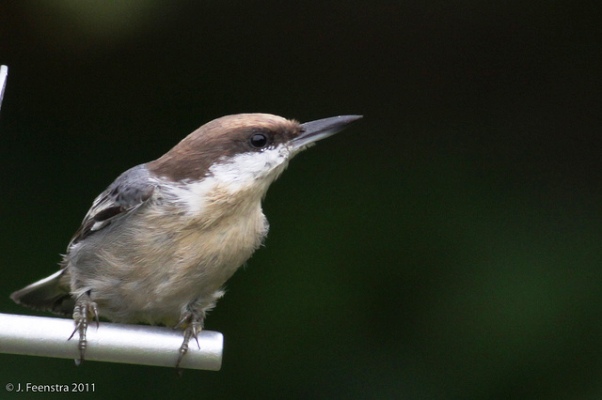
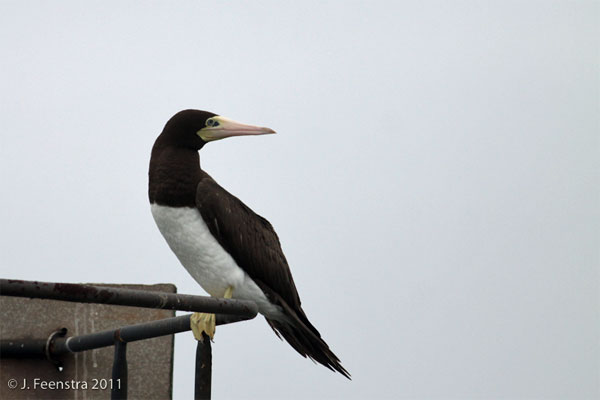
September 30: Rich Hoyer from Cristalino Jungle Lodge, Brazil #5
One of everyone's favorite activities at Cristalino Jungle Lodge is a boat ride on the Cristalino River. One can motor for an hour and not see another boat – and if you do, it's other guests of the lodge, on their way to one of the trails. This past week, I chose to offer a slow, motorless paddle downriver from the lodge as the morning excursion. Before 9:00 a.m., we had seen or heard 12 species of parrots and parakeets and 8 species of raptor. Most surprising was a Collared Forest-Falcon – perhaps the rarest of the four species of Micrastur here – trying to pluck a Sungrebe from the water surface from the overhanging vegetation. The Sungrebe's defense was to fly out and swim across the middle of the river (see photo). To escape from the typical potential river predators, this non-diving water bird usually scrambles up into overhanging vines, and only then can you see the amazing yellow-and-black banded toes (see photo). Another one did just that a little farther downriver. It wasn't just a birdy morning, we also had a great time watching a family of Giant Otters, including one munching on a fish for breakfast (see photo).
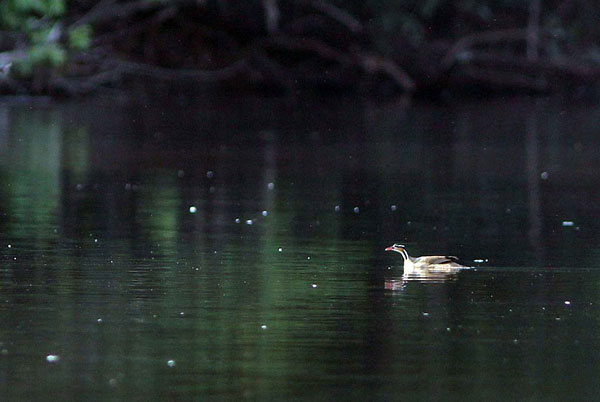
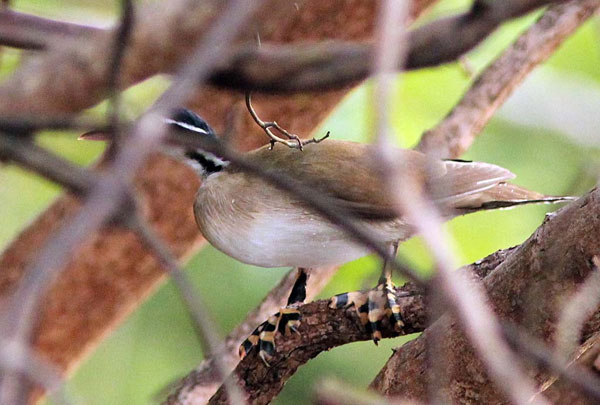

September 22: Jon Feenstra from his Cape May, NJ tour
We left Philadelphia in the morning and with high overcast skies we cleaned up at Brig, the south Jersey saltmarsh of countless birding legends. Despite clouds of pesky bugs when the breeze stopped and a few light showers it was "one of those days". We saw Hudsonian Godwit, Black Terns, Stilt Sandpiper, White-rumped and Pectoral Sandpipers, Bank Swallow and just lots and lots of birds. We also happened into a young male Yellow-headed Blackbird with a flock of Red-winged Blackbirds, the first I've seen in the state. Tomorrow we see what Cape May Point has to offer us. Perhaps a Yellow-crowned Night Heron (below by Chris Wood).
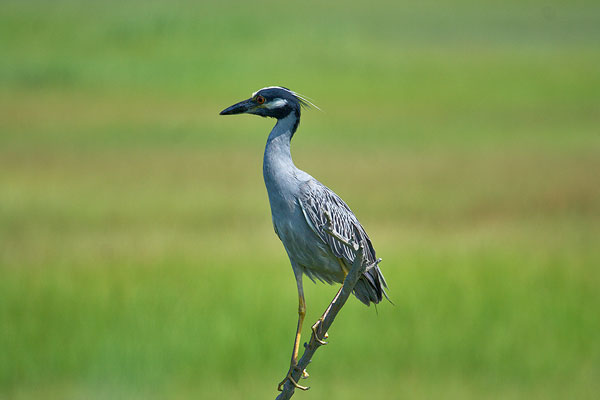
September 18: Rich Hoyer from Cristalino Jungle Lodge #4
Last week was pretty good for mammals – within four days I saw six out of the seven species of monkey that occur here, as well as Brazilian Tapir, Southern Tamandua, and the most obliging Neotropical River Otter I've ever seen (below). Since then Iv'e had a few days off of guiding, which allowed me to spend more time with the birds that frequent the lodge grounds, such as Dusky-billed Parrotlets (below) that come to the fruiting fig tree next to the kitchen each day. After gorging themselves on figs, they follow up with a few nibbles of dirt below. I've also had a chance to wander some of the trails with my friend Stephen Boddington, another guide with a few days off, and just yesterday we managed to finally get really good views of Band-tailed Manakin (below). This afternoon a small group of non-birding clients arrive, and I've been assigned as their guide for four days. I wonder what exciting things we'll find. One group coming back from an upriver trail yesterday spotted four Brazilian Tapirs, including a striped baby.

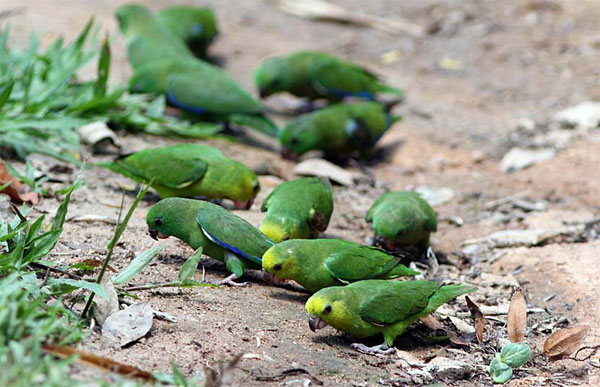
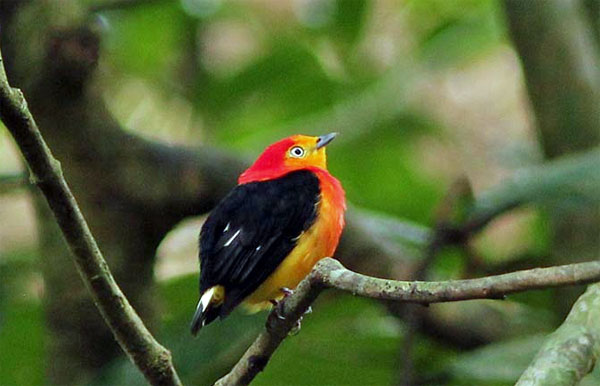
September 6: Rich Hoyer from Cristalino Jungle Lodge, Brazil #3
Every day continues to bring interesting sightings here at the lodge. This week, after hearing them on average every other day, I finally passed beneath the Red-handed Howler (below) troop that lives in the forest near the lodge. They are such fascinating creatures to watch. Birding from the towers is always rewarding, and this past week a pair of White-bellied Parrots (below) with last year's young still in tow, were investigating a cavity next to the tower. But trips on the river (below) continue to be a favorite among the lodge's guests. This Sunbittern finally waited until I had just the right settings on the camera to capture the most amazing wing pattern (below) in the avian world. For the non-birding clients that I'm often guiding, I prepare them for this show by trying to describe the sudden sunburst, and it never fails to amaze. They always also enjoy the amazing tale of this bird's being the sole member of the family Eurypygidae and having only the distant New Caledonia's Kagu as its closest living relative.
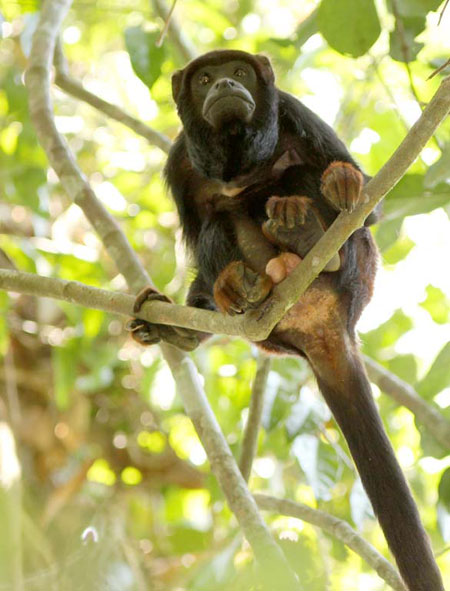
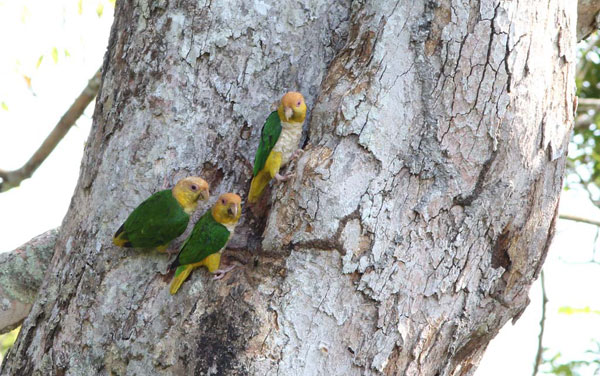
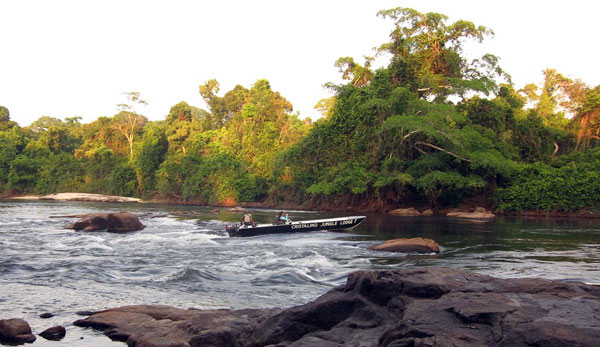
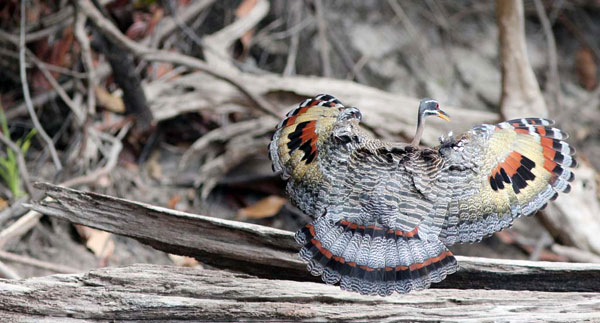
August 29: James Lidster on Netherlands in Late Summer
Just home from the late summer Dutch tour. Highlights included 3+ Short-toed & 3 White-tailed Eagles, 2 Honey Buzzard, 5 Goshawk, 2 Common Crane, Black Stork, Long-eared Owl, Caspian Tern, Caspian Gull, 2 Red-necked Phalaropes, 2 Spotted Crakes, Citrine Wagtail, Great Grey Shrike & found our own Red-throated Pipit & Eurasian Wryneck. In addition we noted Black-necked Grebe, Marsh Harriers, Hobby, Peregrine, Ruddy Shelduck, Great Egrets, Spoonbills (below), White Stork, Garganey, Wood & Curlew Sandpipers, Temminck’s & Little Stints, Ruff, Black Tern, Little & Yellow-legged Gulls.
Once again, no one starved and it can be expected that the combination of ginger biscuits, caramel waffles, and other Dutch treats kept us going through some very non summer like weather!
